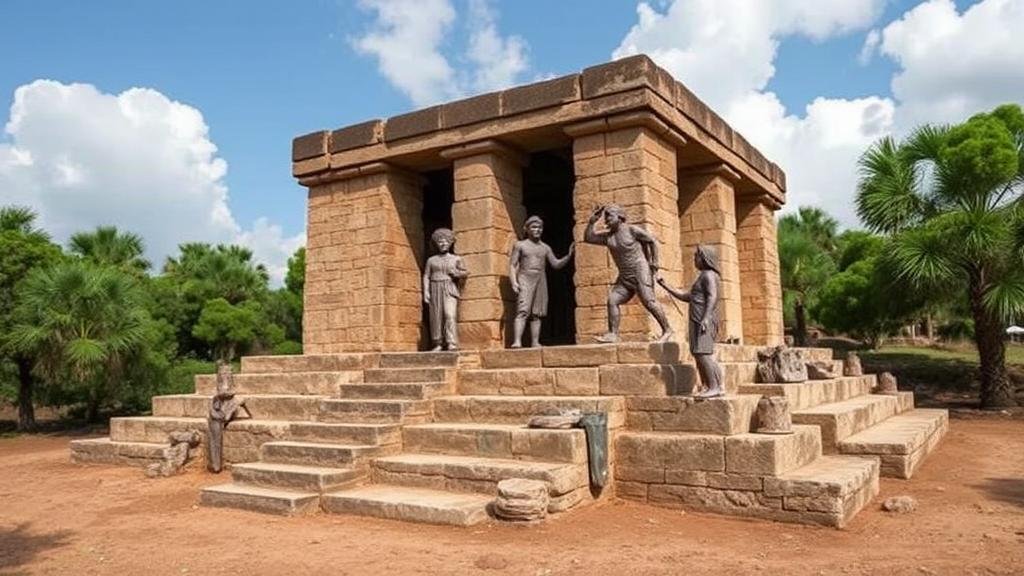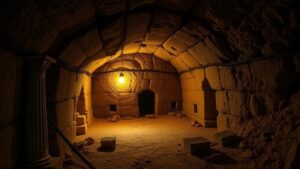Mapping the “Tower of Silence,†where ancient cultures left offerings to the gods.
Mapping the “Tower of Silenceâ€
The “Tower of Silence,†known as Dakhma in Persian, is an ancient Zoroastrian structure integral to the religious practices of one of the worlds oldest monotheistic faiths. It served as a sacred place where Zoroastrians left offerings to their gods, specifically through the ritual exposure of the dead. This article explores the historical significance, geographical locations, and cultural implications of these towers, illuminating their importance in ancient cultures.
Historical Background
The practice of utilizing Towers of Silence dates back to the 5th century BCE, with significant examples found primarily in Iran and India. Zoroastrian faith, founded by the prophet Zoroaster, emphasizes purity and the idea that the dead can pollute the earth, fire, and water. This led to the construction of Dakhmas as a solution to this issue, where corpses could be exposed to the elements and scavengers, primarily vultures, facilitating decomposition.
Geographical Locations
The most notable Towers of Silence are located in:
- Tehran, Iran: The last operational Dakhma was situated in the hills northwest of the city, known as the Mount of Witches. It served the local Zoroastrian community until the mid-20th century.
- Uttar Pradesh, India: The city of Mumbai has several Towers of Silence, still in use today, where ceremonies are conducted according to traditional practices.
- Yazd, Iran: This city features significant Dakhmas perched on hilltops, indicating their use over centuries for various geographical and sociocultural contexts.
Cultural and Spiritual Significance
The Towers of Silence are not merely burial sites; they hold profound cultural and spiritual significance. They reflect the Zoroastrian reverence for nature and the cosmos. practices surrounding the Dakhmas are steeped in symbolism and ritual:
- The elevation of the structures symbolizes the connection between the earthly and the divine.
- The exposure of bodies directly to the elements serves to honor the deceased by returning them to nature.
- The community gathers to pray and perform rituals, reinforcing social ties and shared beliefs.
Real-World Applications: Modern Perspectives
In contemporary society, the concept of clean and environmentally friendly burial practices is gaining traction. The Dakhmas represent an early form of sustainable burial, emphasizing the minimization of the ecological footprint of death. Eco-friendly practices in modern funerals, such as biodegradable caskets and natural burials, reflect similar values in respecting the environment.
Challenges and Concerns
The Towers of Silence face numerous challenges today, including dwindling numbers of practicing Zoroastrians and urban development threatening their physical sites. Plus, modern attitudes toward death and burial practices differ significantly from ancient customs, leading to misunderstandings and misrepresentations. These challenges raise questions about cultural preservation and the legacy of ancient traditions:
- How can modern societies respect and preserve ancient practices while adapting to contemporary values?
- What role does education play in fostering an understanding of Zoroastrian traditions?
Conclusion
The Towers of Silence are more than mere historical relics; they are symbols of ancient beliefs and practices that continue to inspire thought around ecological awareness and cultural preservation. As we map these fascinating sites, we uncover layers of meaning and history that speak not only to Zoroastrianism but also to humanitys enduring relationship with death, nature, and spirituality.
For those interested in further exploration, visiting these sites could provide firsthand experience of the rich cultural heritage embedded in Zoroastrian traditions. Understanding the history and significance of these Towers opens a dialogue about the future of cultural practices in a rapidly changing world.



